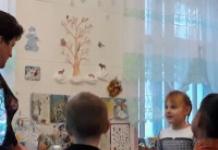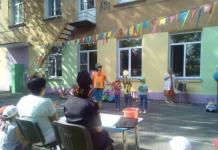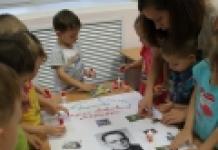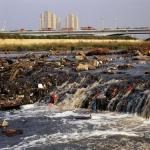Water is of great importance for all life on our planet. People, animals, and plants need it to live, grow and develop. Moreover, living organisms need clean water, not spoiled by foreign contaminants. Before the start of the industrial era, water in natural conditions was clean. But, as civilization developed, people began to pollute water sources with waste from their activities.
Natural sources of water that people use are rivers, lakes, and seas. Clean water is also obtained from underground sources using wells and boreholes. What are the sources of water pollution?
Industry
We live in an era of intense industrial activity. Water in industry is used in huge quantities, and after use it is discharged into industrial sewers. Industrial wastewater is treated, but it cannot be completely purified. Numerous plants, factories and industries are sources of water pollution.
Oil production and oil transportation
Industry and transport require fuel, the production of which uses oil. Oil is produced both on land and at sea. The extracted oil is transported by huge sea tankers. In the event of accidents at oil production sites or transport accidents, spills of oil products occur on the water surface. A few grams of oil is enough to form a film of tens of square meters on the sea surface.
Energy
Thermal stations contribute to the deterioration of the quality of natural water. They use large quantities of water for cooling processes and discharge the heated water into open water bodies. The water temperature in such reservoirs rises, they begin to become overgrown with harmful algae, and the amount of oxygen in such water decreases. All this negatively affects living organisms living in such reservoirs. The ecological balance is disrupted and water quality deteriorates.
Household sphere
People need water, first of all, in everyday life. In every house, in every apartment, water is used for cooking, washing dishes, cleaning rooms, and also in bathrooms. Used water is removed from residential premises through sewage systems. Such water is subsequently purified in special purification devices, but it is very difficult to achieve complete purification. Therefore, one of the sources of water pollution in nature is municipal wastewater. These waters contain harmful chemicals, various microorganisms and small household waste.
Agriculture
Another source of natural water pollution is agriculture. This type of human activity requires huge amounts of water. Numerous fields of crops need to be watered. Water is also needed for raising farm animals. Many artificial fertilizers are used in crop production. Water used to irrigate fertilized fields becomes contaminated by these fertilizers. And wastewater discharged from livestock complexes carries animal waste. With insufficient wastewater treatment in agriculture, natural water sources are polluted.
In our world, there are many sources of natural water pollution caused by human activities. It is impossible to refuse the benefits of civilization, therefore the only way to preserve the purity of natural waters is to continuously improve methods for purifying contaminated water.
Environmental research project “Water is our life!”
“Water, you have neither taste nor color,
no smell, you cannot be described,
they enjoy you without knowing what you are.
It cannot be said that you are necessary for life:
You are life itself"
Antoine De-Saint-Exupéré
(French writer)
Relevance of the project
The main cause of water pollution is the discharge of industrial and domestic wastewater into water bodies. Unfortunately, few businesses have a sufficient filter to purify all the water they use before discharging it into the pond. Currently, almost all the world's rivers are considered dangerously polluted, and, unfortunately, practically no measures are being taken to clean them up. The fact is that cleaning a fresh water body from pollution is a very long and expensive process, and therefore enterprises rarely take such steps. Pollution does not mean that the water has a cloudy and unclear color. It may be completely clean at first glance, but contain many unsafe fungi, viruses, bacteria and chemicals that will not affect its appearance in any way. The most important reason, as mentioned above, is domestic and industrial discharges into the reservoir. However, pollution also occurs due to precipitation near industrial enterprises, as well as oil and fuel accidents on the water. All these factors have a huge impact on the environmental problem of water in our time.
In order to avoid an environmental disaster, it is necessary to prohibit industrial enterprises from using rivers as sewers. In addition, it is necessary to convey to people’s consciousness that they should not pollute water bodies with household waste.
Based on the above, we can conclude that it is necessary to change our attitude towards the environment and nature. To do this, you yourself need to learn to comprehend your relationship to natural objects, and instill these skills in children. Basic knowledge and skills are developed in children in preschool age, therefore it is necessary to conduct events in preschool institutions dedicated to environmental problems of our time.
Short-term project: from 01/28/13-02/10/13
This project is aimed at expanding and deepening preschoolers’ understanding of water, its properties, purpose, impact on human life and water pollution.
Objective of the project:
- Form ideas about water, its properties and significance.
Project objectives:
- Systematize and consolidate existing ideas about water, its properties, and introduce new concepts.
- Introduce children to the methods and techniques of simple water research.
-Develop communication skills by involving children in educational conversations.
-Create conditions for search activities.
-Develop imaginative thinking, imagination, fantasy.
- Foster a reasonable, caring attitude towards nature.
Project problems: What should you do to keep water clean?
Forms and methods of work: Conversation, viewing illustrations, productive activity, experimental research activities, reading fiction, observation.
To implement the project, a team of 8 children called “Young Researchers” was organized.
The team’s motto: “We’ll guess everything in the world, we’re very smart kids.”
Project implementation principles
The following principles were taken into account when implementing the project:
ensuring the unity of educational, developmental and training goals and objectives of the children’s education process, in the process of implementation of which such knowledge, skills and abilities are formed that are directly related to the development of children;
the principle of integration of educational areas in accordance with the age capabilities and characteristics of students;
solving program educational problems in the joint activities of adults and children and independent activities of children, not only within the framework of direct educational activities, but also during routine moments;
building the educational process on age-appropriate forms of working with children.
Expected Result
Children:
- Ideas about water, its properties and significance have been formed.
- A meaningful desire has been formed to take care of the cleanliness of water bodies.
Teacher:
Improving the quality of educational and methodological support for organizing research activities of preschoolers.
Parents:
- Understanding the importance of environmental education for preschoolers.
Main stages of the project:
1 Preparatory stage:
Conversation on the topic “Water is a unique resource of life on Earth.”
Goal: Explain to children the importance of water for all living things.
Water includes lakes, rivers, oceans, and seas.
Water is a very valuable product; all living beings need it: plants, animals, humans.
“Have you heard about water?
They say she's everywhere!
We don't notice it.
We are used to the fact that water is
Our companion always."
Productive activities on the topic:
"How we use water."
Purpose: To give an idea that water is one of the main factors for human life. Explain how people use water in their daily lives.
Advance task for the lesson.
Invite children to remember throughout the day where and what kind of water they saw (indoors, on a walk); how they used it. Did they need a lot of water? At the end of the day, discuss the results of observations and write them down.
The next day, repeat the discussion of the observation results, invite the children to think about where else water can be found. What do we use it for? (We drink, wash our hands, bathe, wash things, wash the floor, water the plants, cook food, water pets, etc.). It is important that children feel how necessary water is. We cannot live without her. Invite children to imagine a situation: “What would happen if the water suddenly disappeared” and have a conversation on this topic.
Photo exhibition "Recreation on the water."
Goal: to form the idea that water is needed not only for consumption, but that it is also a natural landscape.
“Seagulls are flying around in a ring in the distance.
We still don't understand this.
We feel good - we came to rest.
The birds sing cheerful songs to us.
The fish scurry quietly along the shore.
We want to catch these fishermen.
Everyone run away - we've come to rest."
Research activities:
Experience “Water Coloring”
Purpose: Identify the properties of water: water can be warm and cold, some substances dissolve in water. The more of this substance, the more intense the color; The warmer the water, the faster the substance dissolves.
Materials: cups of water (cold and warm), paint, brushes.
Children are encouraged to color the water in cups of warm and cold water. How can you color water? (add paint). In which cup will the paint dissolve faster? (In a glass of warm water). How will the water color if there is more dye? (The water will become more colored).
Stage 2 – practical (research)
Study of local water bodies.
Reading literature: “My city is Pervouralsk”
Goal: To acquaint children with their hometown, with the presence of bodies of water and their location.
Looking at illustrations of local bodies of water:
Conversation with children on the topic: “What is the importance of bodies of water in nature and in people’s lives?”
The importance of reservoirs in people's lives is great. They decorate the earth and delight us with their beauty. People relax here: swim, sunbathe. Ships travel and transport goods on water. They take water from reservoirs, which they cannot do without either at home or at work. The importance of reservoirs in nature is very great. Reservoirs are reservoirs of water, which is necessary for all living things. And for those plants and animals that live in reservoirs, this is the only home.
As a result of studying information sources, the guys determined that there are reservoirs in our city: the Chusovaya River, the Lower Pond and the Upper Pond.
Determining the proximity of factories near water bodies.
Examination of maps of the city of Pervouralsk. The city of Pervouralsk is a powerful industrial hub. There are various industrial enterprises here that have a very negative impact on human life. These enterprises produce emissions both into the atmosphere and into local water bodies.
Modeling a problem situation: “The influence of the proximity of factories on a body of water”:
Purpose: Explain how the proximity of a plant has a detrimental effect on a body of water.
Industrial enterprises use large amounts of water in their production. Such water is heavily polluted with harmful substances. After its use, it is discharged into clean water bodies, polluting them too. Such water is not suitable for human use in domestic conditions; such water cannot be drunk, bathed in or watered plants.
Experimental activity: “Water pollution”.
Goal: To form an idea of water pollution in nature.
In the process of experimentation, students put forward their hypotheses, then test them in practice and in conclusion draw conclusions, generalize the results obtained, and compare them with their assumptions.
So, we learned how industrial enterprises pollute clean water bodies. And we decided to check if this was true? For the experiment, we took a jar of dirty water (mixed garbage with water) and poured it into clean water, we saw that the clean water became dirty. Thus, we have clearly seen how harmful emissions are for our water bodies.
Experimental activity: “Water purification.”
Goal: To form an idea of how to purify water.
Materials: a jar of dirty water, a funnel, a cotton pad, an empty jar.
We
In order to purify water at home, it is necessary to use a filter that removes impurities such as sand and impurities. Statement of the problematic question: We know that water can be purified, but how?
To conduct the experiment, we made a filter (we put a cotton pad in the funnel). Dirty water was poured into the filter, the water was purified and became clean. We came to the conclusion that if water is purified immediately at the enterprise, it will not pollute our water bodies. In such reservoirs it will be possible to swim and take water for drinking. Such water will be safe for animals and plants.
Stage 3 – final
Creation of a model of “Water treatment facilities at a plant”.
Creating a problem situation: “Cleaning water bodies.” “We got acquainted with the methods and techniques of water purification. We figured out how to purify water using filters.” Statement of the problematic question: “How to purify water in a large volume, for example a natural reservoir.” To solve a problematic issue, children offer their own options for changing the situation, including the creation of treatment facilities near enterprises.
Children are invited to design treatment facilities for our pond.
As a result of working on the project, the students created a model of a closed-type treatment facility, which consists of two blocks of water purification: mechanical and biological.
As a result, the children fully developed ideas about the importance of water for all living things. They learned that water is unique in its properties. Children got acquainted with new ways of experimenting and can now repeat experiments at home and explain the results.
The students have formed ideas about how our industrial enterprises pollute water bodies. Children have a meaningful desire to take care of nature.
Ode to water.
You are so malleable - stubborn;
You are so calm, but proud,
Whispering, you sharpen stones for centuries,
And you always defeat them!
You gave life to all living things,
And it’s impossible without you...
When you are sad, you are a quiet pool;
And in anger - a formidable river!
You are power and tenderness,
Passion and gentleness
Evading like a vine
Life conquers your meekness,
It is born in you!
And even death doesn’t argue with you,
When it's spring outside -
If you feed a withered sprout with yourself, it
Tearing up the asphalt, it will stretch the leaves into the sky!
Extracurricular environmental lesson about water - a unique substance, a source of life and beauty. The activity helps to instill in the younger generation a caring attitude towards the most priceless substance on the planet - water. On our beautiful planet there is WATER, awakening and supporting life, gentle and invigorating, murmuring and thundering, solid and soaring, such a familiar and unsolved mystery of nature. These are the thoughts I want to convey to children and touch its secrets with them.
Download:
Preview:
3rd grade
Topic of environmental lesson:
“Water is the source of life and beauty”
Target : to form a holistic view of the world through observation, awareness, perception and activity, to form the concept of caring for water, the importance of water for human life, to repeat the three states of water in nature, to show its beauty; develop a conscious attitude towards the result of your educational work, develop techniques of mental activity: comparison, classification, analysis, synthesis, develop self-control; contribute to the greening of lifestyles, fostering respect for water and nature in general, and fostering a sense of cooperation and mutual assistance towards each other.
Equipment: globe, laptop, projector; cut cards-signs; equipment for experiments.
Progress of the lesson
1. Org. moment.
Guys! We continue to celebrate environmental week. Today our lesson is dedicated to water. Let's talk about the amazing, unique substance water, about its protection, protection, because water is the source of life and beauty.
Let's read in chorus the topic of the lesson on the board: “Water is the source of life and beauty.”
To create an atmosphere of cooperation and trust in our small team, we will conduct
Communicative exercise “Rain”.
A group of guys forms a circle. In the center of the circle there is a leader who shows certain movements. A new movement begins only after all participants in a circle are consistently included in its execution. The change of movement by the participant occurs at the moment the leader is opposite him. The rest of the guys continue to perform the previous action.
Sequence of movements: the leader and the first participant (then in turn the second, third, etc.) join their palms and slowly begin to make circular movements with them. Then clicks are performed with the fingers, then they begin to clap their palms, then pat the thighs and stomp their feet. Then all movements are performed in reverse order. With these movements, participants imitate a thunderstorm from beginning to end. Throughout the game, the children listen carefully and compare the sounds they receive with phenomena occurring in nature.
2. Introduction.
Look at the globe - a model of the globe. “Earth is a planet of amazing blue! – the first cosmonauts returning from deep space enthusiastically reported.
And our planet cannot look any different; most of its surface is occupied by seas and oceans, glaciers and lakes, rivers, ponds and reservoirs. Water is the most abundant substance on our planet.
Have you heard about water?
They say she is everywhere!
Like an icicle freezing.
Fog creeps into the forest.
It's called a glacier in the mountains.
It curls like a silver ribbon.
We are used to the fact that water is
Our companion always!
We are used to it, we use it every day, and we consider it an everyday occurrence. Meanwhile, the water is amazing and mysterious. She is a true miracle of nature, the only one of her kind. Today we will look into its secrets.
Experience “Water on Planet Earth”.
Most of our planet is covered with water, but it is distributed unevenly over the surface and we cannot use all the water. Let's try to estimate the scale of water reserves.
(Teacher demonstrates)
- Fill a liter jar with water tinted with blue gouache. It will symbolize all earthly reserves of water.
- Let's take 1 ml of water using a syringe from a liter jar and squeeze it into the air. This is water that is in the atmosphere.
- Pour 4 ml of water into a glass - this is fresh water in rivers and lakes.
- Pour 21 ml into an ice tray - this is exactly the amount of water (in accordance with our scale) that is frozen on the ground.
- Pour 1 ml into the soil. This is water located inside the earth's surface.
- The 973 ml remaining in the jar is the water of the seas and oceans. Add salt there - this is salt water.
- Discussion. What containers contain water suitable for humans? (water suitable for use symbolizes water in rivers and lakes and in soil).
Water! This is one of the most common substances in nature. More than 70% of the Earth is covered in water, but only 2.5% of this water is suitable for drinking.
Tell me, with such a limited supply, is it important to take care of it?
3. Modeling water in different states.
It is known that in nature water can exist in three different states: solid, liquid and gaseous.
Clouds, rain, ice, snow, steam, hail, fog, frost - different states of water.
Take the pictures lying on your desk and distribute them into groups. (children go to the board and distribute the pictures according to the state of aggregation of water depicted on them: solid, liquid, gaseous)
Let's play, turn into water molecules and visit its different states.
- Let's clasp our hands, bent at the elbows. We're standing tight. - This is a solid state. We are like ice.
- Let's take hands. Now we stand more freely, we can turn around. “Let’s flow” to the right side, and now to the left! – This is a liquid state.
- Let's unhook the handles. We “fly” freely in all directions! – This is the gaseous state of water.
Molecules! Let's fly to our seats!
4. Brainstorming “The meaning of water.”
Water is not only the most common, but also the most important liquid on the planet.
- Water is a source of energy.
- Water plays an important role in geology and in the history of the planet.
- Without water, living organisms cannot exist; living organisms contain water.
- In enterprises, factories, factories, and farms, most technological processes occur with the participation of water. For example, the chemical industry, production of paper, metal, medicines, food products.
- Water plays a huge role in everyday life.
- For some animals, water is their place of life.
- Cargo and passengers are transported by water.
- Water can store and transmit information.
What is the importance of water for life on our planet?
The guys record their thoughts on colored pieces of paper, express them out loud and put their pieces of paper in the “The Meaning of Water” pocket. This pocket is located on the “research apron” held by the teacher.
5. Presentation “Water is the source of life and beauty.”
(The presentation is accompanied by reading a text about the beauty of water)
Not a single person in the world can convey the beauty of water in words. She is the main source of life for all life on earth. And the most fascinating phenomenon.
Smooth rivers and lakes are reflected in the rays of the sun. They sparkle, causing admiration. The sound of water can calm a person's soul. And a small ringing stream can ring with a cheerful song.
In the morning you can see a real miracle. Small, clean and transparent dewdrops, like glass beads, scattered on the leaves and flowers. It seems that the whole world is reflected in every dewdrop.
Water can also be in the form of warm summer rain. Drops falling from the sky make you happy and cheerful. And after a summer thunderstorm you can see a multi-colored rainbow, which is impossible to see without rain.
Seas and oceans can show all the strength and power of water. Watching the sea, you can see at one time a quiet surface, and you can see a real storm. The waves crashing against the rocks also attract with their beauty.
Without water there would be no life on earth!
6. Experiments with water.
1) Laboratory "Research"(Work in pairs)
Find out how much water can be wasted due to a faulty faucet. (Work in small groups).
Let's set the samovar tap so that water drips from it. Let's count the number of drops per minute. Let's write the result in the table.
Now let’s put an empty glass (100g) under the tap and see how long it takes for it to become full. We will write the results in a table.
Take care of clean water!
2) Laboratory "Experimental"
A person uses clean water, and you can see for yourself what kind of water is returned to nature.
Take the cans on your desk, open them and pour the contents into cups of clean water. Stir with a glass rod.
- dishwashing detergent (we drain this water after washing dishes);
- a pinch of soil (this water remains after washing shoes);
- a little washing powder (water after washing);
- gouache (water after painting with paints);
- sawdust (water after washing the floor in the hallway);
- a drop of fuel oil (water after washing the car)
Do you like this water?
Can it be used again?
Can this water be made clean again?
Take the filter circle in your hands, fold it into a ball and lower it into the funnel, try to purify the water by passing it through the filter.
Is the water well purified?
Why is water more difficult to purify?
What is easier: polluting water or purifying it?
- Exercise “Water traffic light”.(Work in pairs)
Each pair is given three sign cards and circles of red, yellow and green, according to the colors of the traffic light. Participants must arrange the sign cards according to their intended purpose.
- Red circle – human actions that harm water;
- Yellow circle – actions for rational use of water;
- The green circle represents human actions aimed at protecting water and its inhabitants.
Red circle (answers A3, B2, C1)
- A3 – wastewater emissions from factories pollute city rivers.
- B2 – when washing a car, a lot of water is wasted and the soil and water bodies are polluted.
- B1 – rivers are polluted by household waste in recreation areas.
Yellow circle (answers A1, B3, C3)
- A1 – you can prevent water loss by closing the tap tightly.
- B3 – By taking a shower rather than a bath, you can save water.
- B2 – using water for watering plants from a watering can is more economical.
Green circle (answers A2, B1, C3)
- A2 – our spring – is clean, because people protect it from pollution.
- B1 – fry, which are grown artificially, are released into clean water.
- B3 - rainwater, which is collected in containers, can be used for human benefit.
- Reflection “A Drop of Mood”.
Compiling a syncwine about water.
- Homework.
Water is the most valuable natural resource. Its role is to participate in the metabolic process of all substances that are the basis of any life form. It is impossible to imagine the activities of industrial and agricultural enterprises without the use of water; it is indispensable in human everyday life. Water is necessary for everyone: people, animals, plants. For some it is a habitat.
The rapid development of human life and inefficient use of resources has led to the fact that Environmental problems (including water pollution) have become too acute. Their solution comes first for humanity. Scientists and environmentalists around the world are sounding the alarm and trying to find a solution to the global problem.
Sources of water pollution
There are many reasons for pollution, and the human factor is not always to blame. Natural disasters also harm clean water bodies and disrupt the ecological balance.
The most common sources of water pollution are:
nuclear weapons testing;
radioactive waste discharges;
major accidents (ships with nuclear reactors, Chernobyl nuclear power plant);
disposal of radioactive waste at the bottom of oceans and seas.
Industrial, domestic wastewater. Having not undergone a system of purification from chemical harmful substances, when they enter a body of water, they provoke an environmental disaster.
Tertiary treatment. The water is treated with powders, special compounds, and filtered in multiple stages, killing harmful organisms and destroying other substances. It is used for household needs of citizens, as well as in the food industry and agriculture.

- radioactive contamination of water
The main sources that pollute the World Ocean include the following radioactive factors:
Environmental problems and water pollution are directly related to contamination by radioactive waste. For example, French and English nuclear plants contaminated almost the entire North Atlantic. Our country has become the culprit of pollution of the Arctic Ocean. Three underground nuclear reactors, as well as the production of Krasnoyarsk-26, have clogged the largest river, the Yenisei. It is obvious that radioactive products entered the ocean.

Pollution of world waters with radionuclides
The problem of pollution of the waters of the World Ocean is acute. Let us briefly list the most dangerous radionuclides that enter it: cesium-137; cerium-144; strontium-90; niobium-95; yttrium-91. All of them have a high bioaccumulating capacity, pass through food chains and concentrate in marine organisms. This creates a danger for both humans and aquatic organisms.
The waters of the Arctic seas are subject to severe pollution from various sources of radionuclides. People carelessly dump hazardous waste into the ocean, thereby turning it dead. Man has probably forgotten that the ocean is the main wealth of the earth. It has powerful biological and mineral resources. And if we want to survive, we urgently need to take measures to save it.
Solutions
Rational consumption of water and protection from pollution are the main tasks of humanity. Ways to solve environmental problems of water pollution lead to the fact that, first of all, great attention should be paid to the discharge of hazardous substances into rivers. On an industrial scale, it is necessary to improve wastewater treatment technologies. In Russia, it is necessary to introduce a law that would increase the collection of fees for discharges. The proceeds should be used for the development and construction of new environmental technologies. For the smallest emissions, the fee should be reduced, this will serve as motivation to maintain a healthy environmental situation.
The education of the younger generation plays a major role in solving environmental problems. From an early age it is necessary to teach children to respect and love nature. Instill in them that the Earth is our big home, for the order of which every person is responsible. Water must be conserved, not poured out thoughtlessly, and efforts must be made to prevent foreign objects and harmful substances from getting into the sewer system.

Conclusion
In conclusion, I would like to say that environmental problems of Russia and water pollution probably worries everyone. The thoughtless waste of water resources and the littering of rivers with various garbage has led to the fact that there are very few clean, safe corners left in nature.Environmentalists have become much more vigilant, and numerous measures are being taken to restore order in the environment. If each of us thinks about the consequences of our barbaric, consumerist attitude, the situation can be improved. Only together will humanity be able to save water bodies, the World Ocean and, possibly, the lives of future generations.




















